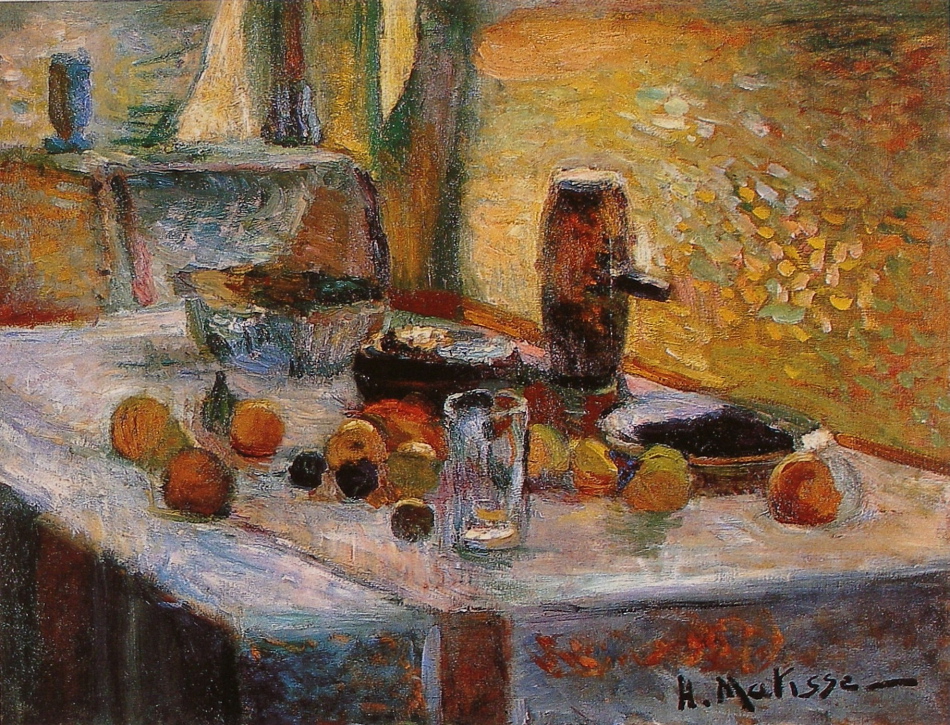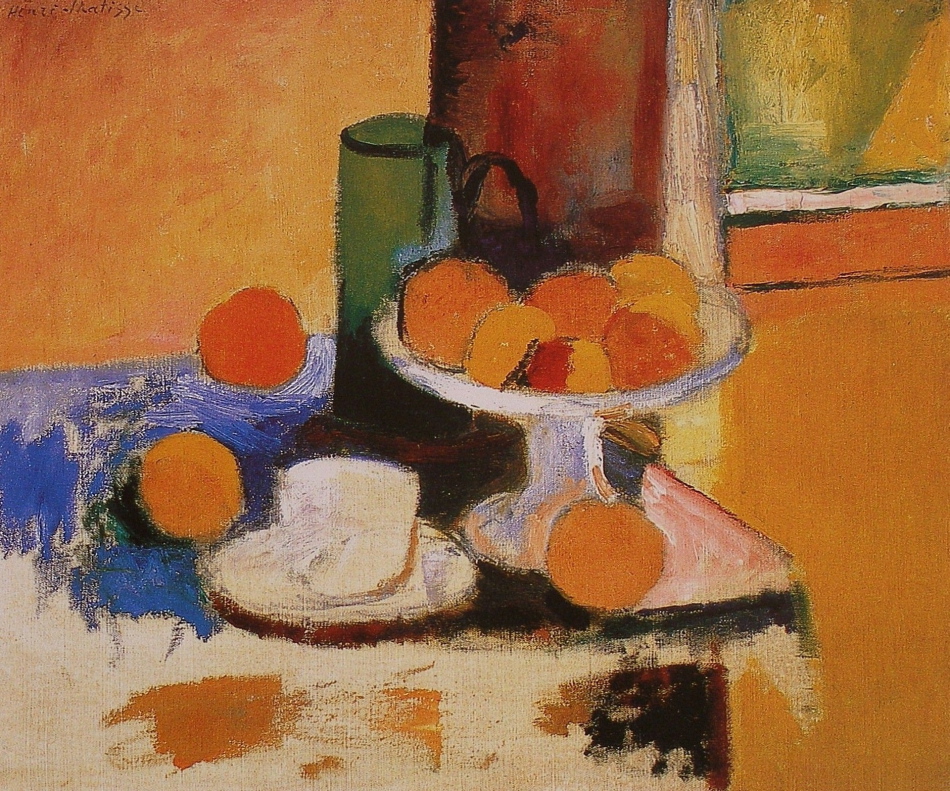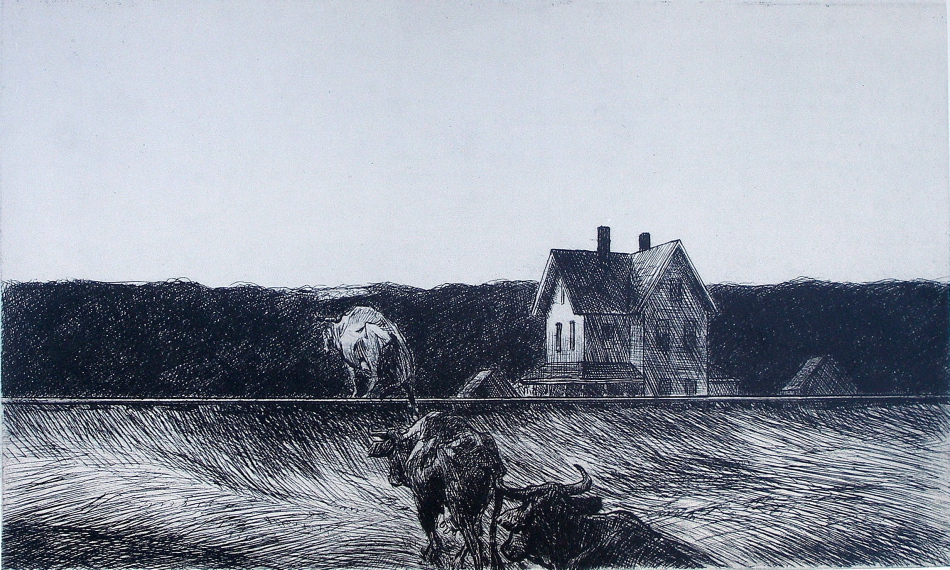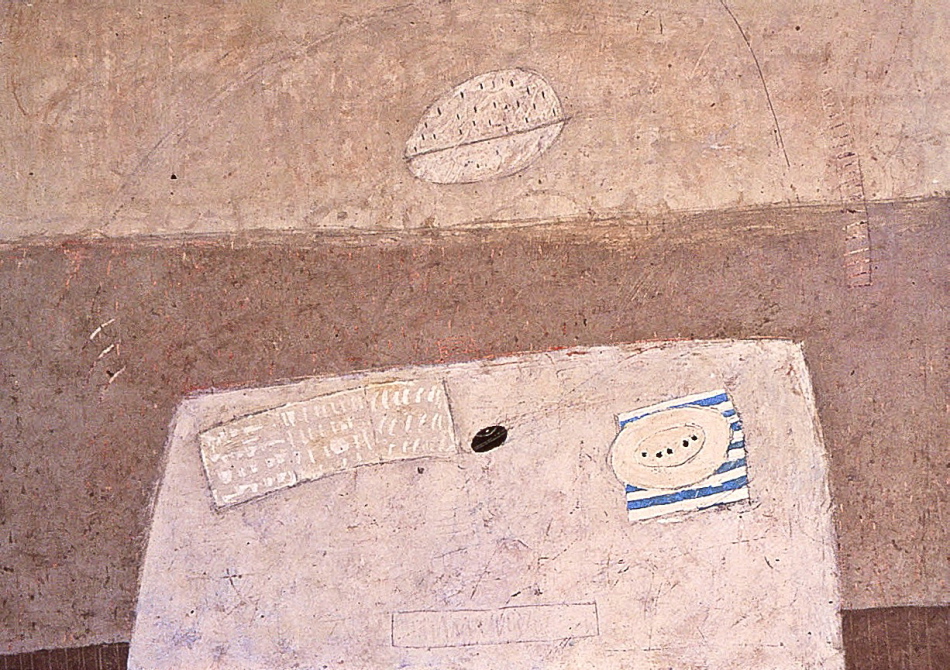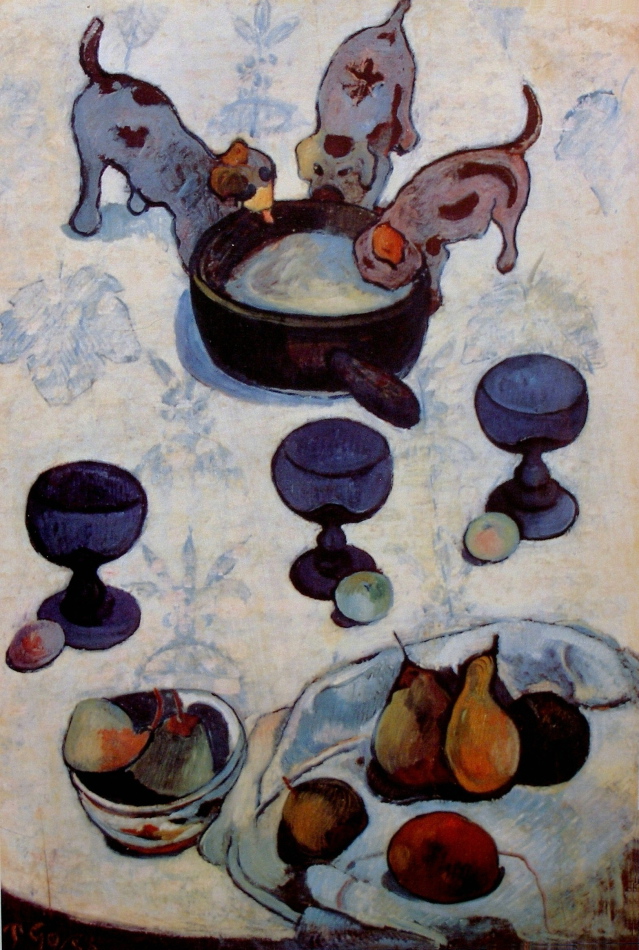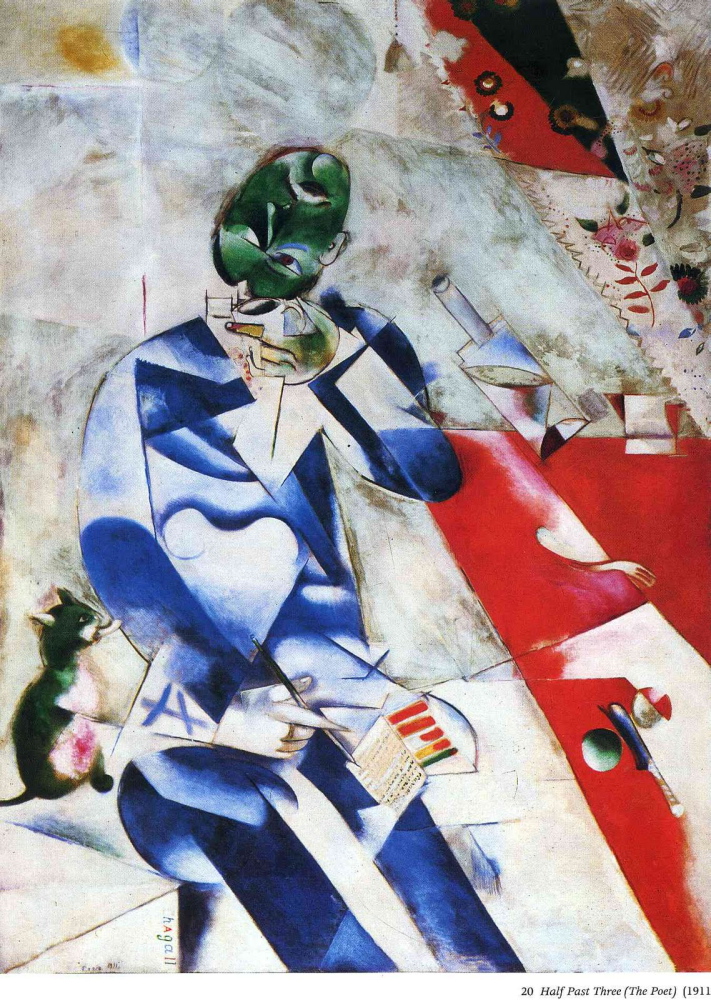This recent still life is an excellent example of using shapes for continuity or rhythm in a composition. Repeating shape motifs organize my considerations, permitting me to search for an interesting arrangement within the context of my chosen shapes -(rectangles, half ovals and triangles). I begin with the basic rectangle of the table. The rest of the composition is not predetermined, but rather develops through playfully scratching in the paint, then removing and rearranging the shapes until I respond to their relationships.
Next I playfully marked in two parallels which define the edges of the tablecloth. Can you feel how your eye moves up and to the right along the angle determined by the edges? I also played with the half oval shapes of the chair and the place mat, adjusting their relative positions and sizes until I found myself marking three rhythmic half ovals on the wall above. I then refined the shapes which were formed by the tablecloth painting them blue to represent the table. There is a very important triangle at the bottom (on the tablecloth) which leads you towards the boxes and a playful small one just below the boxes. I also indicated a partial triangle above on the wall. I am now responding to the painting and continued to orchestrate with various markings to enhance the viewer’s participation
I love spatial planes which also can be read as shapes. There are two in the painting, which I marked in just after the half ovals. One is the sense of a rectangle protruding above the top edge of the table and the other on the wall, which appears the come forth. I like the sense of depth they provide and their relationship with the shapes of the boxes and the blue cup.



